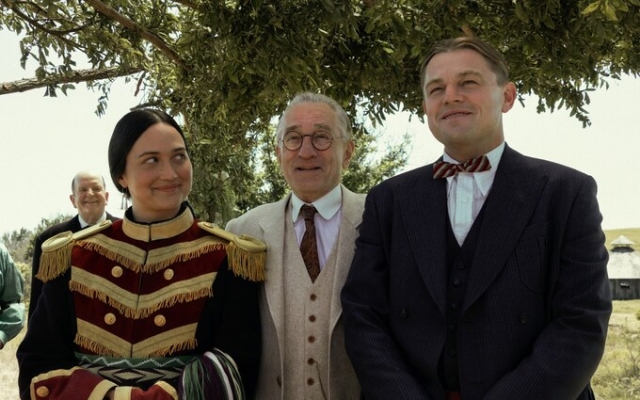 Lily Gladstone, Robert De Niro and Leonardo DiCaprio in Killers of the Flower Moon Posted by Melinda Sue Gordon
Lily Gladstone, Robert De Niro and Leonardo DiCaprio in Killers of the Flower Moon Posted by Melinda Sue Gordon
Killers of the Flower Moon Martin Scorsese's Flower Moon is a probing interrogation of the American dream and audience possibilities. The film is almost three and a half hours long, full of intense drama and asks many difficult questions. For example: should I go to the toilet now or wait until Leonard DiCaprio finishes his monologue?
Some cinemas took matters into their own hands and announced breaks in screenings — to the delight of viewers (judging by social networks). Strictly speaking, intermissions require the approval of the film's distributor, so theaters don't necessarily shout it from the rooftops. But for those who have no choice but to spend the full three hours and 26 minutes with Scorsese, there's always the innovative RunPee app, which determines the optimal moment for a bathroom break. It also allows moviegoers to quickly find out what they missed while they were away.
In the case of Flower Moon Killers, the app identifies five such possibilities. For example, when Ernest Burkhart (DiCaprio) says, “I just love money… almost as much as I love my wife…” gird your loins and run. On your way back, you can launch the app to get a quick overview of the scenes you missed.
“There has been an increase in the number of films that have ended or after about two and a half hours. hour plus. There are more of them. They stand out,” says Dan Gardner, an American software developer who created RunPee as a demo for potential clients — and was surprised to see it take on a life of its own.
He says: Such long films are by no means common: when it comes to mainstream releases, there are on average about four per year. But they fueled the growth of RunPee, which now has a user base of 250,000. It's not just a matter of timing, though: When it comes to choosing the optimal moment to urinate, some genres pose particular challenges.
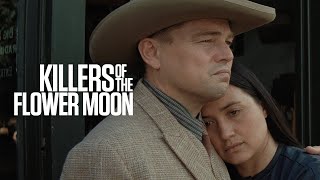
“The secrets are obviously complex,” he says. “Oh man…this is a great time to pee.” And 25 minutes later you're like, «Oh, shit… what happened during the pee turned out to be important.» You need to see it, not just talk about it.”
For Gardner, the challenge is to select points that are easily generalizable. One of the hardest films to schedule bathroom breaks was Oppenheimer, a hallucinatory rush with ultra-short scenes that moved back and forth across the timeline. Director Christopher Nolan packed so much into it that it was hard to separate the highlights from the missables. However, in general, the better the film, the easier it is to come up with a plot twist.
“One thing we've noticed is that good movies usually make it feel good to pee. The editing is like this – the pace is good. Ups and downs, moments that relax. The misconception is that pee time is the boring part of the movie. More precisely, this is the part of the film that you summarize so that you don’t miss anything from this summary. Emotional, dramatic scene: not the best way to pee.»
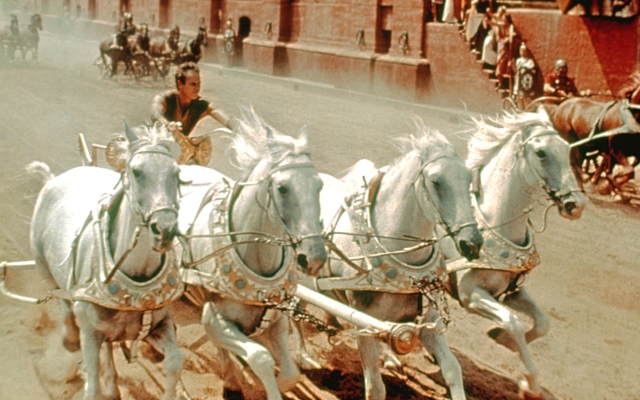 Charlton Heston in Ben-Hur, duration 212 minutes. Photo: Everett Collection/Rex Feature
Charlton Heston in Ben-Hur, duration 212 minutes. Photo: Everett Collection/Rex Feature
Not all intermissions are created equally. Throughout film history, some directors have viewed these breaks as aids to storytelling. For example, in the 1959 film Ben-Hur (three hours and 32 minutes), an intermission divides the film between the hero's early life and his career as a Roman charioteer. Likewise, the three-hour, 53-minute Cleopatra from 1963 (outdone by Scorsese, or maybe not) takes a breather after Cleopatra and Caesar take power. The second part tells of times of rebellion and strife both in Egypt and throughout the Empire.
Never one to miss the old school Hollywood trend. Quentin Tarantino attempted to revive the intermission sequence for The Hateful Eight in 2015, which he released in a special 70mm version — running 20 minutes longer than the regular release (three hours and 48 minutes) — and in which he included a 12-minute intermission between «third» and «four» chapters after Samuel Jackson's character shoots Bruce Dern. As the story continues, the narrator says, “About fifteen minutes have passed since we last left our characters.”
In Britain, intervals were common until the Eighties, says Phil Clapp, chief executive of the UK Film Association, which represents cinema operators. Back then, films were released on reels, and they had to be changed, which gave the audience a natural break.
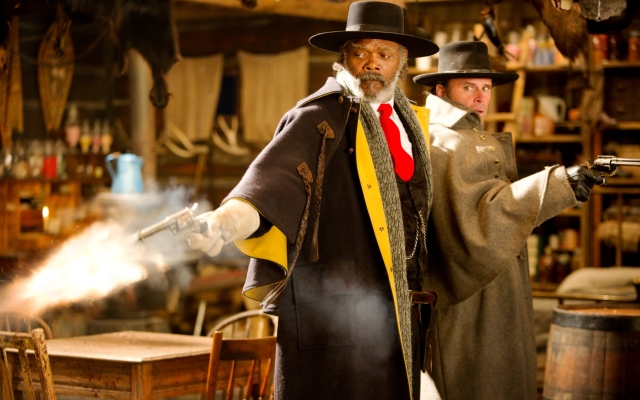 “The Hateful Eight” by Quentin Tarantino, released at intervals of 12 minutes. Photo: ANDREW COOPER
“The Hateful Eight” by Quentin Tarantino, released at intervals of 12 minutes. Photo: ANDREW COOPER
“The size of the drums meant that there were natural breakpoints at various parts. There was a logical point when the film could have been stopped. People could get together for a break, you know, buy more popcorn or something like that. By the end of the 1980s, although it was still the same technology, with some developments, intermissions sort of died out. Then, starting in 2008, we moved from analogue film to digital. Essentially, the film was delivered either to a hard drive or via broadband to the theater. It's essentially one digital file. There is no obvious point at which to stop.”
According to him, one of the main opponents of intermissions is Hollywood. This became a source of controversy as Disney's Pirates of the Caribbean films became longer and longer, and theaters suggested taking a break. “They [Disney] felt that breaking the narrative would somehow conflict with the director's creative vision. For cinema operators, having an intermission provides a financial benefit because people then go and buy food and drink in general, as well as use the premises. At the same time, the human bladder can exist for a very long time.”
In his opinion, Killers of the Flower Moon was a turning point for this topic. “Because it is significantly longer than a regular film, some camera operators even schedule breaks. So some smaller companies and at least one of the larger carriers offer customers choice. No one will be forced to watch a film with an intermission: there will always be a choice. The feedback they received, as well as some on social media, was very positive.”
my viewing of “Killers of the Flower Moon” received 15 points. minute interval, which is interesting pic.twitter.com/TWbG1WLExh
— naaaaaanbred (@naaaaaanbred1) October 22, 2023
In other territories, intermissions have not gone away. They remain standard in Belgium, Germany — and India, where no Bollywood epic is complete without a trip to the toilet.
One common misconception is that cinemas are against intermissions because they reduce profits for by reducing the number of breaks. impressions With extremely long films, Clapp says, this logic doesn't hold up.
“It’s marginal,” he says. “Most of our members are single-screen cinemas. And if you're a one-screen movie theater and you have a three-hour, 25-minute movie, if you add at least the featurette and trailer, including cleanup time… you'll probably get a maximum of two showings in one day. So adding 15 or 20 minutes to make the experience more enjoyable for your customers is also a good idea.”
Films, of course, have become longer. In 1982, the average length of the 10 most popular films at the US box office was 108 minutes. By 2022, it has increased to 132 minutes. Nowadays, it's not unusual for mass market films to exceed two and a half hours: Avatar: The Way of Water, Babel, Batman and Elvis all clocked in at around three hours, with the latest being Searching for The Lost Ark and Indiana Jones sequels were the longest in the series.
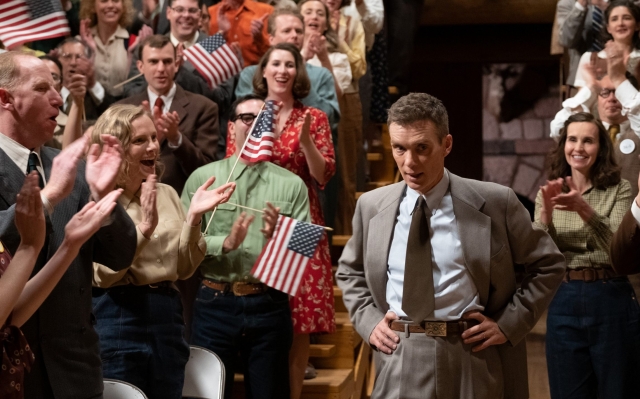 Cillian Murphy in Oppenheimer Photo: Melinda Sue Gordon/Universal Pictures
Cillian Murphy in Oppenheimer Photo: Melinda Sue Gordon/Universal Pictures
Back at RunPee, Dan Gardner wasn't shocked to learn that movie theaters were taking breaks from showings of «Flower Moon»—for the pleasure of audiences, but also for more prosaic reasons.
“I don't know. I don't know what the economy is like, but it looks like the movie theater would like to have an intermission. In the case of RunPee, we're partnering with AMC Theaters because they want to be able to encourage users to drink [more] soda. To take a break in the middle of the movie, go to the bathroom and buy more popcorn. I'm surprised we don't have intermissions, especially for longer films.”
How will it end? The long-form movie trend is not Killers of the Flower Moon. It can take some time. Considering that Taylor Swift's tour film «Eras» is nearly three hours long and Oppenheimer's film is 180 minutes and nine seconds long, the marathon film is clearly going nowhere. Kevin Costner's new western, Horizon, spans 15 years on the cutting edge and is reportedly 11 hours long in its current form. He'll split it in two, but the result will be a lot of dumb ass. Just pray you get an aisle seat.























































Свежие комментарии